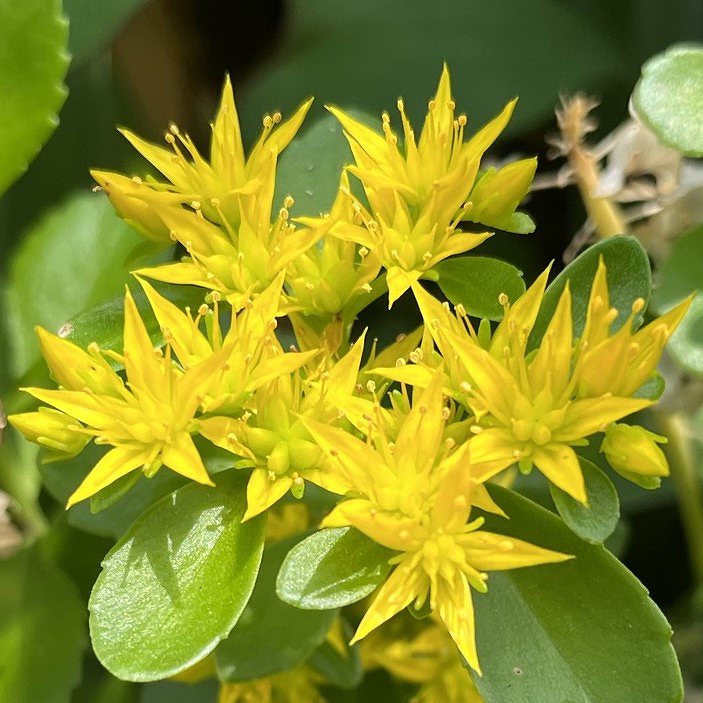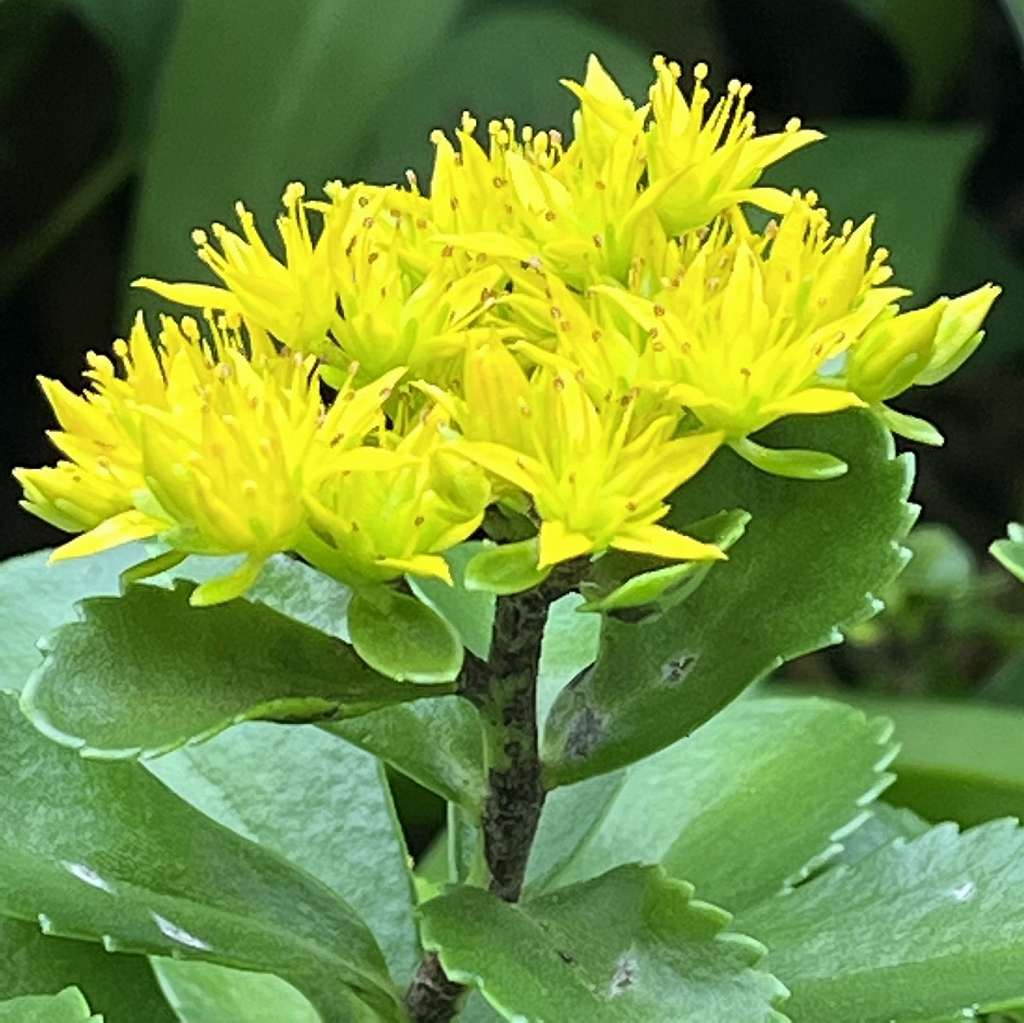キリンソウは観賞用に植栽されるほか、塗り薬や救荒食にも用いられました。麒麟は中国の神話に登場する動物。泰平の世に現れる瑞獣です。
Sedum aizoon was planted for ornamental purposes, and was also used as an ointment and a crop to prepare for famine. Kirin is an animal that appears in Chinese mythology. It is a creature of auspiciousness that appears in a peaceful time.
【仮名】キリンソウ
【和名】麒麟草, 黄輪草
【英名】Sedum Aizoon
【学名】Phedimus aizoon
【誕生】08/ 13
【開花】05, 06, 07, 08月
【花色】Yellow



キリンソウ
キリンソウの自生
キリンソウはベンケイソウ科の多年草です。日本列島からシベリア東部、朝鮮半島、中国まで分布し、海岸から山地まで岩場や草原に自生。観賞用に植栽されるほか、薬用に磨り潰した葉の汁を虫刺されや切り傷に塗ったり、救荒食用に茹でた葉を乾燥して保存します。花言葉は警戒。
キリンソウの名前
キリンソウの名前の由来は傷薬になる草を意味する「キジンソウ」「キジグサ」が転じたとも。漢字の表記は当初、黄色の花が輪のように咲くから「黄輪草」でしたが、後に中国の神話に登場する動物の名前をあてて「麒麟草」へと変わります。麒麟は泰平の世に現れる伝説上の瑞獣。
キリンソウの姿形
キリンソウは春、太い茎が真っ直ぐに立ち上がり、肉厚の葉が互生。葉は楕円形で先のほうの縁に浅いギザギザが入ります。茎先では小さな星型の花々が平たく集まって放射状に展開。花の造りは花弁が5枚、萼片が5枚、雄しべが10本で雌しべの柱頭が尖ります。花後は袋果を形成。
キリンソウの種類
「光岳麒麟草」は丈が小さく、赤石山脈に自生しています。「細葉の麒麟草」は葉が細く、中部地方以北に自生。「蝦夷の麒麟草」は葉が小さく、茎が密集し、北海道に自生しています。「姫麒麟草」は葉が対生で四国山地に自生。「竹島麒麟草」は茎が木質で竹島に自生しています。
Sedum Aizoon
Sedum aizoon is a perennial herb of the family Crassulaceae. It is distributed from the Japanese archipelago to eastern Siberia, the Korean Peninsula, and China, and grows naturally in rocky areas and grasslands from the coast to the mountains. In addition to being planted for ornamental purposes, the juice of medicated ground leaves is applied to insect bites and cuts, and boiled leaves are dried and stored for famine. Flower language is vigilant.
The origin of the name of Kirinso: sedum aizoon is that “Kijinsou” and “Kijigusa”, which mean grasses that can be used as wound medicine, have changed. Initially, the kanji notation was “yellow ring grass” because yellow flowers bloom like a ring, but later it was changed to “Kirin grass” by assigning the name of an animal that appears in Chinese mythology. Kirin is a legendary creature of auspiciousness that appears in a peaceful time.
In spring, the thick stems of sedum aizoon stand up straight, and the thick leaves alternate. The leaves are oval and have a shallow jagged edge at the tip. At the tip of the stem, small star-shaped flowers gather flat and radiate out. The flower is made of 5 petals, 5 sepals, 10 male stamens, and the stigma of the female pelvis is sharp. After flowering, it forms a sack fruit.
“Tekaridake” is short and grows naturally in the Akaishi Mountains. “Hosoba” has thin leaves and grows naturally north of Chubu region. “Kamtschaticus” has small leaves, dense stems, and grows naturally in Hokkaido. “Sikokianus” has opposite leaves and grows naturally in the Shikoku Mountains. “Takesimense” has a woody stem and grows naturally in Takeshima.


